Check out the Best Cold Tolerant Fruit Trees you can grow in gardens and pots without worrying about the low temperature in your area!
Here is an all-inclusive list of the Best Cold Tolerant Fruit Trees that are super cold hardy, won’t mind the lower temperatures, and will give you a fresh harvest even in the coldest of months!
Check out the best drought-tolerant fruit trees here
Best Cold Tolerant Fruit Trees
1. Paw Paw

Botanical Name: Asimina triloba
USDA Zones: Hardy in zones 5-7 as perennials
Hardy To: -15 F or -26 C
This cold-hardy, deciduous tree needs 140-160 frost-free days and winter chill. The tree grows up to 12-20 feet tall and prefers slightly acidic, well-draining, moist, fertile soil.
The tree produces large edible fruit with custard-like sweet flesh.
2. Apple
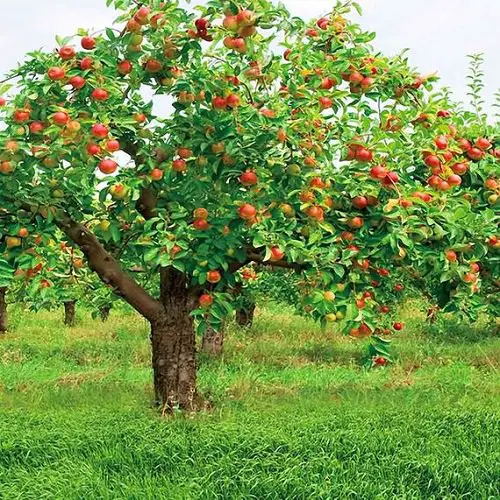
Botanical Name: Malus pumila ‘Airlie Red Flesh’
USDA Zones: 3-10
Hardy To: -30 F or -34 C
Originated near the town of Airlie in western Oregon, this fruit tree features pink blossoms during spring. Grow this tree in full sun and use well-draining soil.
Here’s everything you need to know about growing apple in pots
3. Jelly Palm
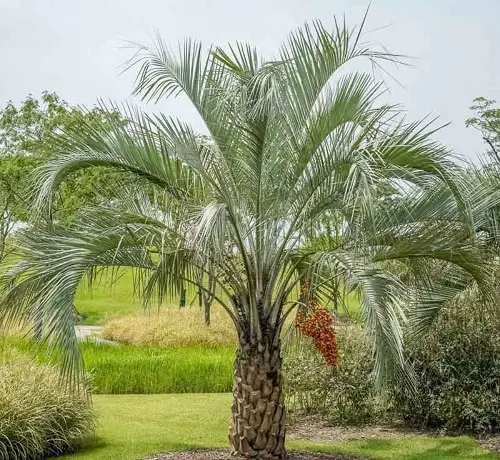
Botanical Name: Butia capitata
USDA Zones: 8-11
Hardy To: 10 F or -12 C
This hardy feather-leaf palm has a slow to medium growth rate. During mid-late summer beautiful flower spikes emerge and yield hundred of fruits one month after flowering. The sweet-flavored fruit can be consumed fresh or used in making jam or jelly.
4. Passion Fruit
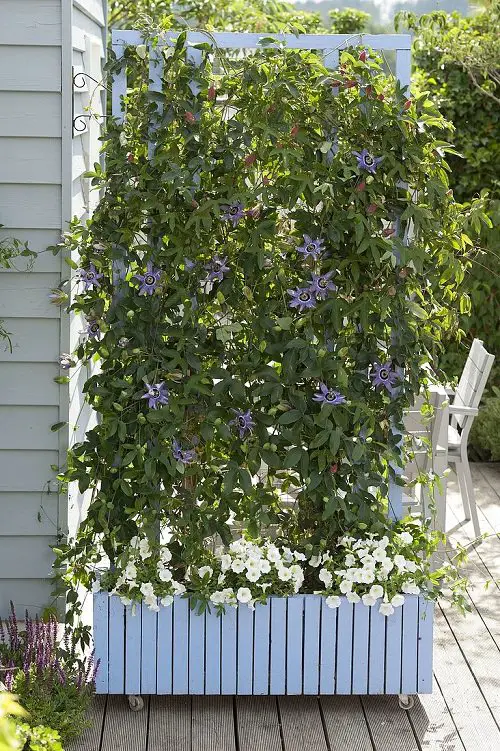
Botanical Name: Passiflora incarnata
USDA Zones: 8-11
Hardy To: 10 F or -12 C
This hardy vine produces lemon-musk scented blooms and light green fruits with a tart apricot flavor. Grow the tree in full sun in the northern parts, and little dappled afternoon shade is good in southern hot locations. The fruit can be eaten raw or used in jams and jellies.
5. Plums
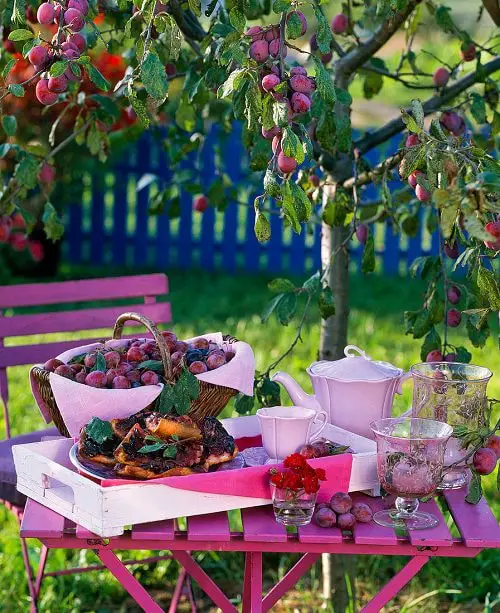
Botanical Name: Prunus domestica
USDA Zones: 3-5
Hardy To: -30 F or -34 C
European plums can be grown in cold climates. The key rule to keep the plant healthy is to make sure its branches receive sunlight, so prune the ones that shade the other parts of the tree. Also, plant them in spring, when the frost in your area goes away.
Note: European plums are cold-hardy to zone 5, American hybrids to zone 3-4, and Japanese plums are hardy to zone 6.
6. Cherry Silverberry

Botanical Name: Elaeagnus multiflora
USDA Zones: 5-9
Hardy To: -20 F or -28 C
This semi-evergreen to deciduous shrub grows up to 6-10 feet tall. Sweet-tart fruits are juicy that can be consumed fresh or cooked.
You can grow this shrub in any type of soil from acidic to alkaline and sand to clay. The plant favors full sun or partial shade and can also survive in the salty sea air.
7. Pear
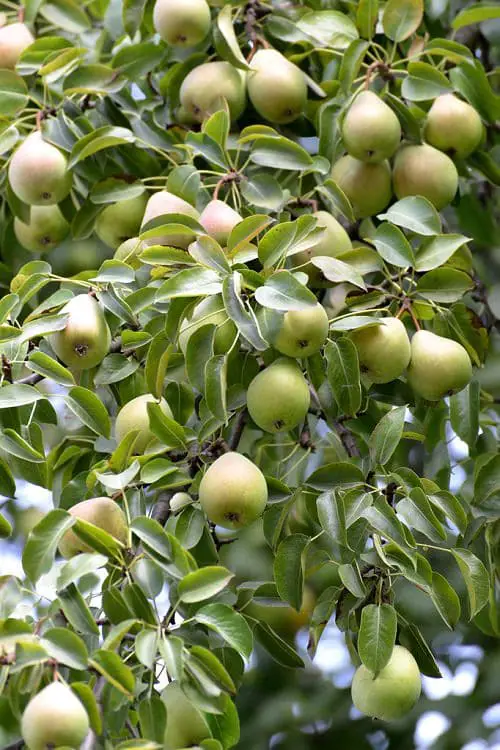
Botanical Name: Pyrus communis X Sorbus aria
USDA Zones: 3-6
Hardy To: -30 F or -34 C
This tree is self-fertile, it begins fruiting slowly and takes up to 12-15 years if conditions are not good. On average, it produces fruits in 4-7 years. Shipova Pear is one of the best varieties to grow.
8. Honeyberry

Botanical Name: Lonicera caerulea
USDA Zones: 3-10
Hardy To: -30 F or -34 C
Haksap is a deciduous shrub, it can grow up to 4-6 feet tall. The plant needs full sun and well-draining soil with ph 3.9-7.7, high in inorganic matter.
Honeyberry has a sweet blueberry-like taste, you can eat it raw or in processed form in jams, yogurt, and ice cream.
9. Peaches
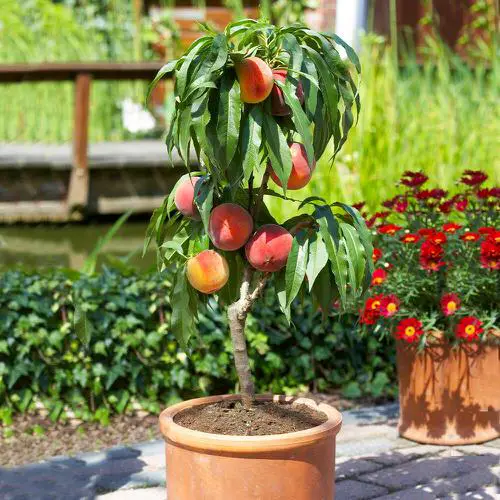
Botanical Name: Prunus persica
USDA Zones: 4-9
Hardy To: -25 F or -31 C
Some cultivars like Contender, Madison, Red Haven, Canadian Harmony, Reliance, and Glohaven can be grown in zone 4.
Dwarf varieties can be grown in pots – always buy a healthy mature plant from the nursery for a quick harvest.
10. Mayhaw

Botanical Name: Crataegus aestivalis
USDA Zones: 7-10
Hardy To: 0 F or -17 C
This ornamental tree owns attractive blooms, beautiful foliage, and bunches of colorful, juicy fruits that resemble cranberries and crabapples in taste. It likes well-draining, moist, loamy soil.
11. Cherry
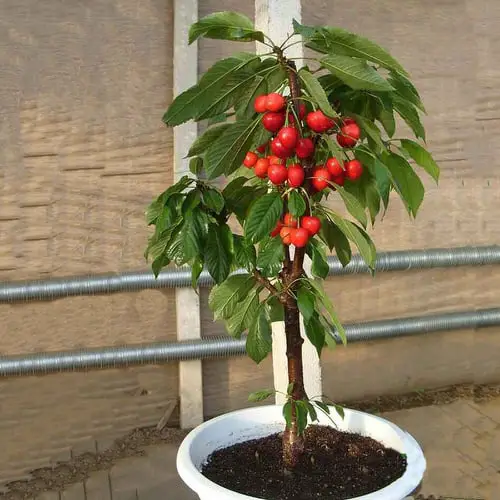
Botanical Name: Prunus avium
USDA Zones: 4-7
Hardy To: -25 F or -31 C
You can grow bush cherry cultivars in pots. This fruiting plant prefers a mild climate but fluctuating temperatures and drought can damage the plant. Grow cherry in well-draining soil composed of organic matter.
12. Aronia Berry
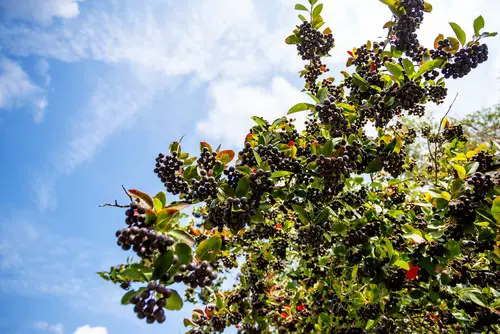
Botanical Name: Aronia melanocarpa
USDA Zones: 4-9
Hardy To: -25 F or -31 C
Commonly known as black chokeberry, this deciduous shrub grows up to 3-6 feet tall. During spring creamy white flowers blooms, ink-black berries appear in fall. The plant grows best in full sun to partial shade in soil pH 6-6.5.
13. Pomegranate
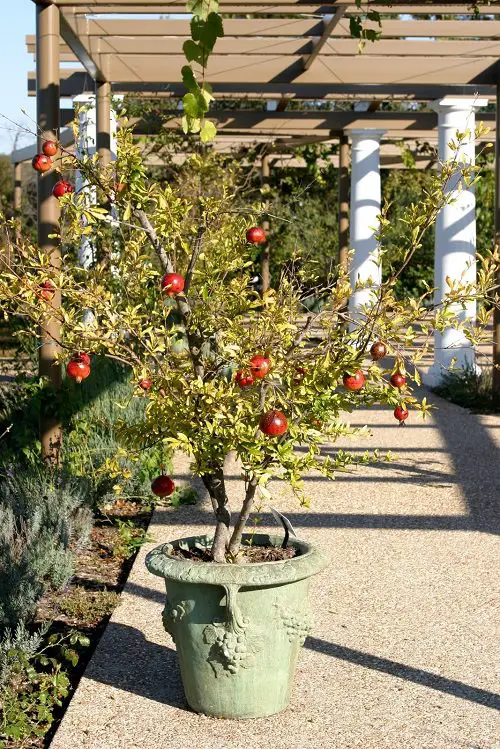
Botanical Name: Punica granatum
USDA Zones: 7-10
Hardy To: 0 F or -17 C
Pomegranate like Salavatski is cold-hardy and you can easily grow it in pots as the plant has a shallow root system. Bring them indoors if the temperature outside dips down too much.
Here’s everything you need to know about growing Pomegranate
14. Golden Kiwi

Botanical Name: Actinidia chinensis
USDA Zones: 3-9
Hardy To: -30 F or -34 C
Hardy varieties like baby kiwis can be grown in cold areas. The best way to take care of them is to grow the plant in pots and bring them to a warmer area when the climate becomes too cold.
Check the growing information and right variety here
15. Goji Berry
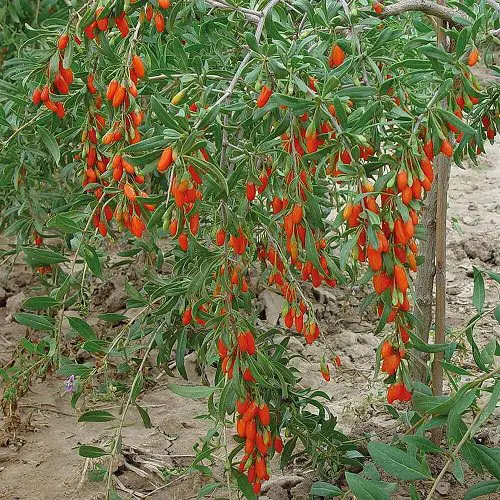
Botanical Name: Lycium Bararum
USDA Zones: 4-9
Hardy To: -25 F or -31 C
Also known as Chinese Wolfberry, the highly branched, deciduous, and slightly thorny shrub can grow up to 8-12 feet tall and wide the height can be restricted if grown in pots. Check the growing information here.
16. Jujube
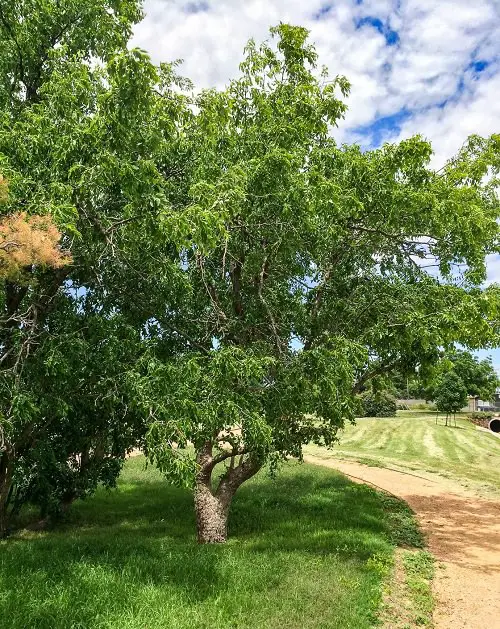
Botanical Name: Ziziphus jujuba
USDA Zones: 6-9
Hardy To: 5 F or -15 C
Native to China, the tree grows up to 20-40 feet tall with fruits having a taste like an apple. The tree prefers warm and sunny locations. Learn all jujube growing details here.
17. Elderberry

Botanical Name: Sambucus nigra, S. canadensis, S. glauca, S. caerulea
USDA Zones: 3-8
Hardy To: -30 F or -34 C
Elderberry is multi-stemmed, sprawling, or deciduous, or small trees that grow up to 15-20 feet tall. Plant the trees in the spring when the threat of frost passed.
18. Che
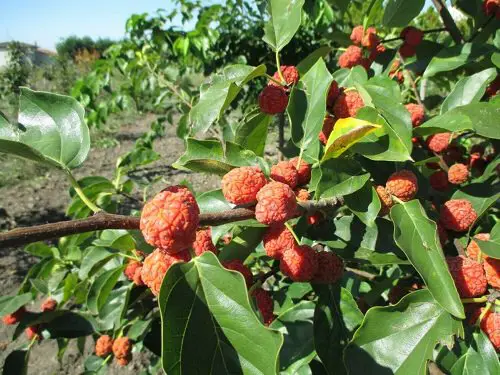
Botanical Name: Cudrania tricuspidata
USDA Zones: 5-9
Hardy To: -15 F or -26 C
This deciduous small tree or shrub grows up to 15-25 feet tall. The fruits ripen for a month or more during fall with a watermelon-like flavor. Plant this tree in fertile loamy soil under full sun.
19. Sea Berry
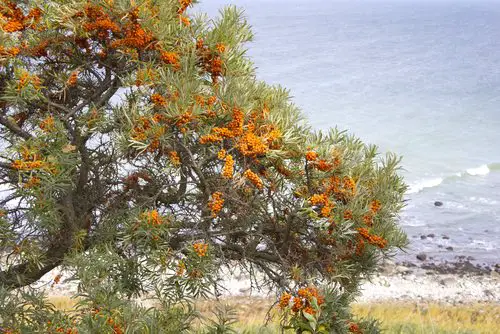
Botanical Name: Hippophae rhamnoides
USDA Zones: 2-9
Hardy To: -40 F or -40 C
This hardy thorny small tree or shrub grows up to 6-15 feet tall. The citrus-flavored tart to sweet fruit ripens from July to November. Grow the plant in full sun in well-draining soil. Sea Berry can mend its own nitrogen, so a small amount of fertilizer is required.
20. Cornelian Cherry
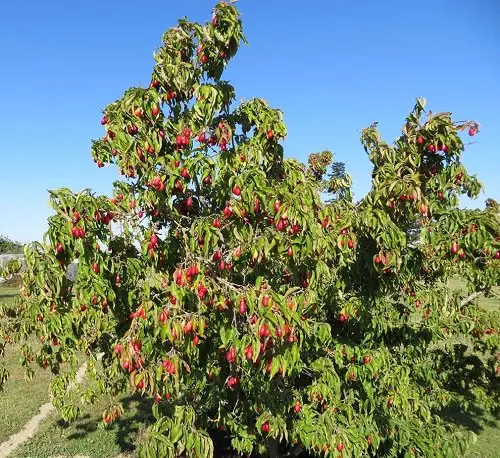
Botanical Name: Cornus mas
USDA Zones: 4-8
Hardy To: -25 F or -31 C
Cornelian Cherry belongs to the dogwood family, this small, shrub-like tree can grow up to 15-25 feet tall. The fruit is aromatic with a sweet-tart taste like a fusion of cranberry and sour cherry.
You can grow this tree in full sun or partial shade and soil high in organic content.
21. Medlar

Botanical Name: Crataegus germanica
USDA Zones: 5-8
Hardy To: -15 F or -26 C
Medlar is appreciated for its delicious fruits and ornamental appearance. The 2-inches wide fruit is soft brown in color and has a flavor of pear and apple sauce. Grow the plant in full sun and well-draining soil.
22. Chinese Hawthorn

Botanical Name: Crataegus pinnatifida
USDA Zones: 5-9
Hardy To: -15 F or -26 C
This cold-hardy deciduous tree has red and gold foliage in fall. Its fruits have a tasty tart-sweet taste. Grow the fruit in full sun in wet or dry soil. The tree becomes drought tolerant when mature.
23. Mulberry
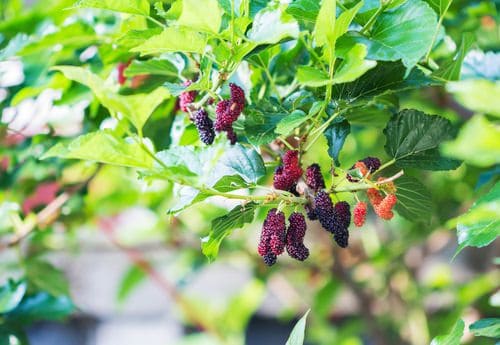
Botanical Name: Morus nigra, M. alba, M. rubra and hybrids
USDA Zones: 4-8
Hardy To: -25 F or -31 C
This deciduous, fast-growing tree is quite a drought, soil, and pollution tolerant. Cold hardiness depends on the cultivar and species you are growing, fully established trees are cold hardy to at least 0 F.
Grow the tree in fertile, well-draining, clay, or loamy soil with moisture-holding capacity and pH 6.2-6.8.
24. Korean Dogwood
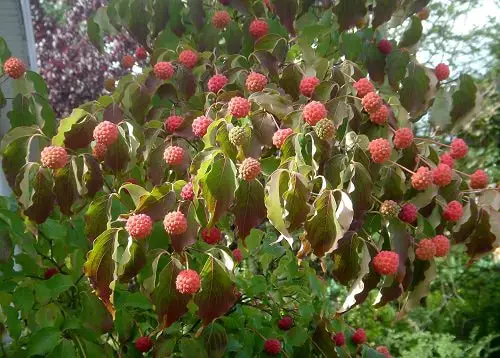
Botanical Name: Cornus kousa
USDA Zones: 5-8
Hardy To: -15 F or -26 C
This cold-hardy, deciduous shrub grows up to 15-30 feet in acidic to neutral, rich organic, well-draining moist soil in full sun to partial shade. The fruit is sweet and has a tropical pudding-like taste.
25. Apricot
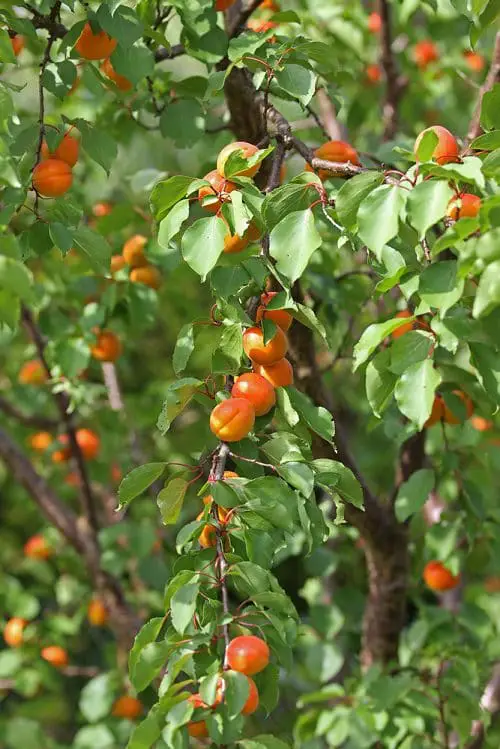
Botanical Name: Prunus armeniaca
USDA Zones: 4-9
Hardy To: -25 F or -31 C
There’s nothing like enjoying a fresh harvest of home-grown apricots. Canadian White Blenheim, Goldcot, and Puget Gold are some of the best varieties you can grow in cold regions. It has a tangy and sweet taste.
26. Crabapple

Botanical Name: Malus
USDA Zones: 4-7
Hardy To: -25 F or -31 C
If you want to grow a crabapple without worrying much about the cold weather, then Magenta’ Hybrid Crabapple is the variety you must go for. It produces sweet and tarty fruits.


